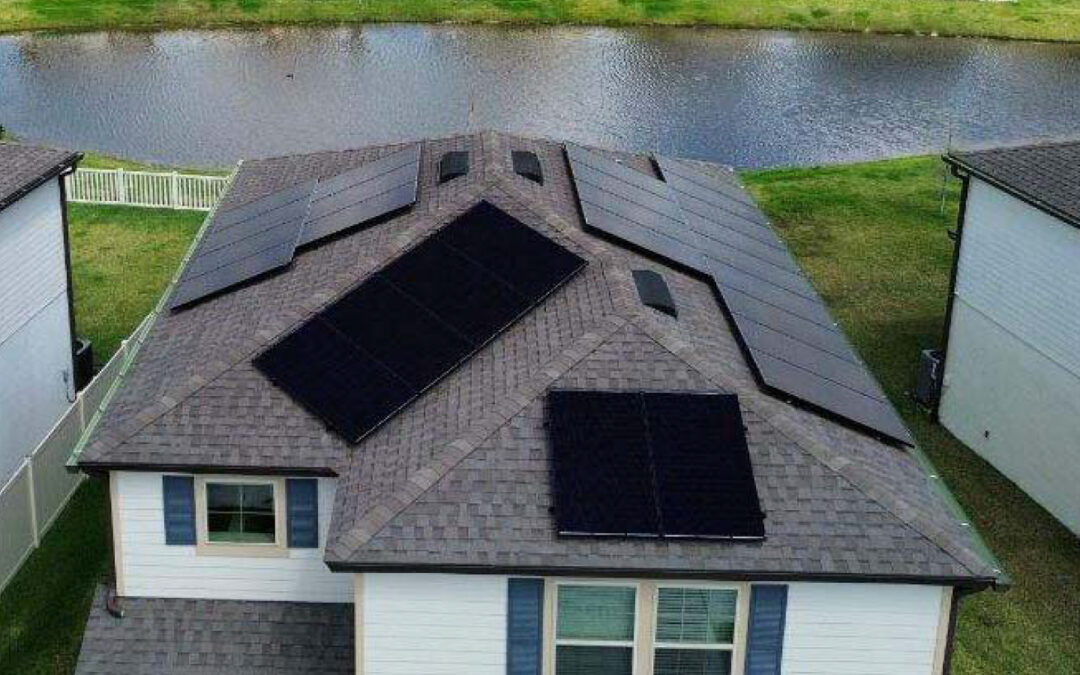Kickstart 2025 with Solar: As 2025 begins, it’s a great time to switch to solar energy in Tampa, Florida. Solar energy is growing fast, with over 162 gigawatts of solar power installed nationwide. Florida, known as the “Sunshine State,” is a top spot for solar installations due to its abundant sunlight and push for renewable energy.
The state’s solar capacity has grown to 12,877 megawatts, enough to power about 1.5 million homes. Tampa is leading the way, with solar installations becoming more common. Currently, 6.4% of Florida’s electricity comes from solar, and the industry employs over 12,260 people. Thanks to the state’s high sunlight levels, January 2025 is the ideal time to start your solar journey in Tampa.
Why January is the Perfect Time for Solar Panel Installation
Starting the year with solar panel installation brings many advantages. Here’s why January 2025 is an ideal time to begin your solar journey in Tampa:
- Maximize Tax Incentives Early in the Year: The federal solar tax credit (ITC) lets homeowners deduct 30% of solar installation costs from their federal taxes. Installing solar panels early in 2025 makes you eligible for this credit when filing your 2025 taxes, leading to significant savings. The ITC covers solar panels and related equipment, like inverters and batteries. For instance, a $20,000 solar system would qualify for a $6,000 tax credit if you have enough tax liability. Starting in January ensures you can fully benefit from these incentives right away.
- Avoid the Busy Season and Shorten Installation Time: The beginning of the year is slower for solar companies, so you’ll likely experience shorter wait times for installation. Many homeowners rush to complete installations by the end of the year to qualify for tax incentives, leaving January a quieter month. Taking advantage of this slower period means faster scheduling, quicker project completion, and possibly even better rates from local installers.
- Prepare for Peak Solar Production Months: Installing solar panels early in the year allows your system to be fully operational before the sunnier months arrive. Florida has some of the highest solar irradiance in the U.S., making it an excellent location for solar energy. Starting in January, you’ll maximize your energy production during the year-round sunlight periods, helping you achieve a quicker return on your investment.
Factors to Consider When Installing Solar Panels in Tampa
Tampa has great solar potential, but not all properties are ideal for solar installations. Factors like shading, roof orientation, and roof condition can impact feasibility. A site survey is essential to check if your home is suitable and to identify any needed upgrades, such as electrical panel improvements or roof repairs.
Approval may be required before installing solar for residents in HOA-governed communities. Luckily, the Florida Solar Rights Act protects homeowners from unreasonable restrictions, making the approval process more accessible.
How Tampa Electricity Rates Impact Solar Savings
The cost of electricity in Tampa plays a critical role in determining how quickly solar panels will pay for themselves. Florida’s average residential electricity rate is about 15.48 cents per kilowatt-hour (kWh), slightly below the national average. However, electricity costs have steadily risen, making solar power an increasingly attractive option for homeowners. The higher the electricity rates, the faster the savings from solar energy can offset the initial installation costs, reducing the payback period for your investment.
Florida Solar Incentives in 2025
Several incentives make solar installations in Tampa even more appealing:
- Net Metering Programs: Florida’s net metering laws ensure that utility companies compensate homeowners for extra electricity generated by their solar panels. In Tampa, you can earn credits on your electric bill for any surplus energy your system sends back to the grid, maximizing the value of your solar installation.
- Sales Tax ExempFlorida’s Solar Installations: In Florida, solar energy systems are exempt from the state’s sales tax. This exemption applies to solar photovoltaic (PV) panels, solar pool heating systems, and solar water heaters, reducing the total installation cost by approximately 6%.
- Property Tax Exemption for Renewable Energy Systems: Adding solar panels can boost your property’s value without raising property taxes. Florida law ensures that installing renewable energy systems like solar panels, wind turbines, or geothermal systems won’t impact Florida’s tax assessment.
Qualifying for Solar Energy Incentives
To fully benefit from the federal tax credit, the solar system must be purchased rather than leased. Additionally, homeowners must have sufficient tax liability to utilize the credit. If the tax credit isn’t feasible for some residents, other options, such as solar leases or community solar programs, may still make solar energy a viable source.
Why Tampa is a Leading Solar Market
Favorable conditions like high electricity costs, sunshine, and supportive policies like net metering and the Solar Rights Act drive Tampa’s solar energy growth. The area’s commitment to renewable energy has made it a leading market for solar installations. Local utility companies are boosting their solar efforts to meet Tampa’s rising demand for clean energy, making solar more appealing for residents and businesses.
January is the perfect time to embrace solar energy in Tampa. With incentives like the federal tax credit, net metering, and sales tax exemptions, going Solaris has always been more affordable and advantageous. Early installation will set you up for maximum savings as electricity prices continue to rise and allow you to capitalize on Florida’s plentiful sunlight for optimal energy production.





